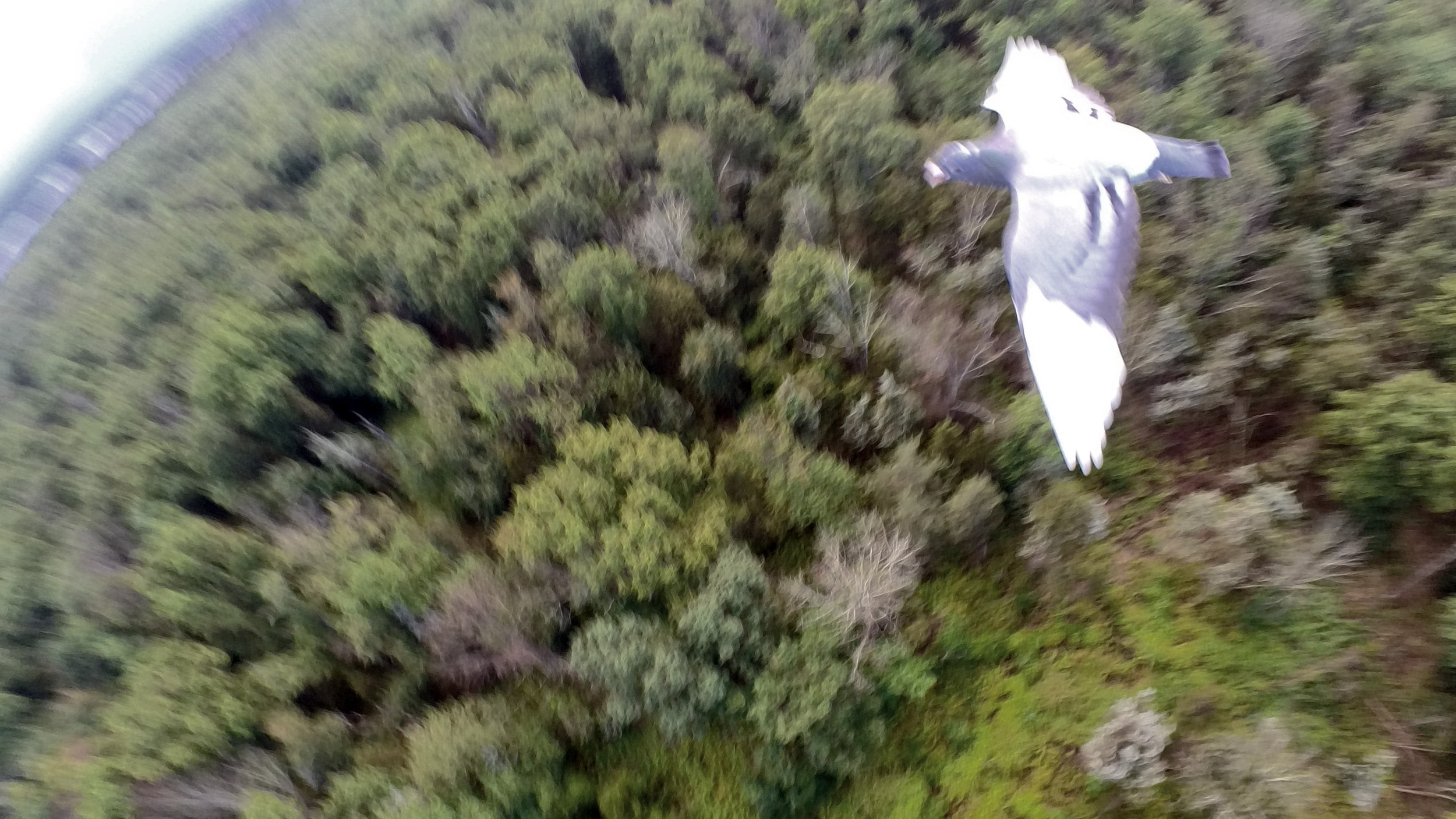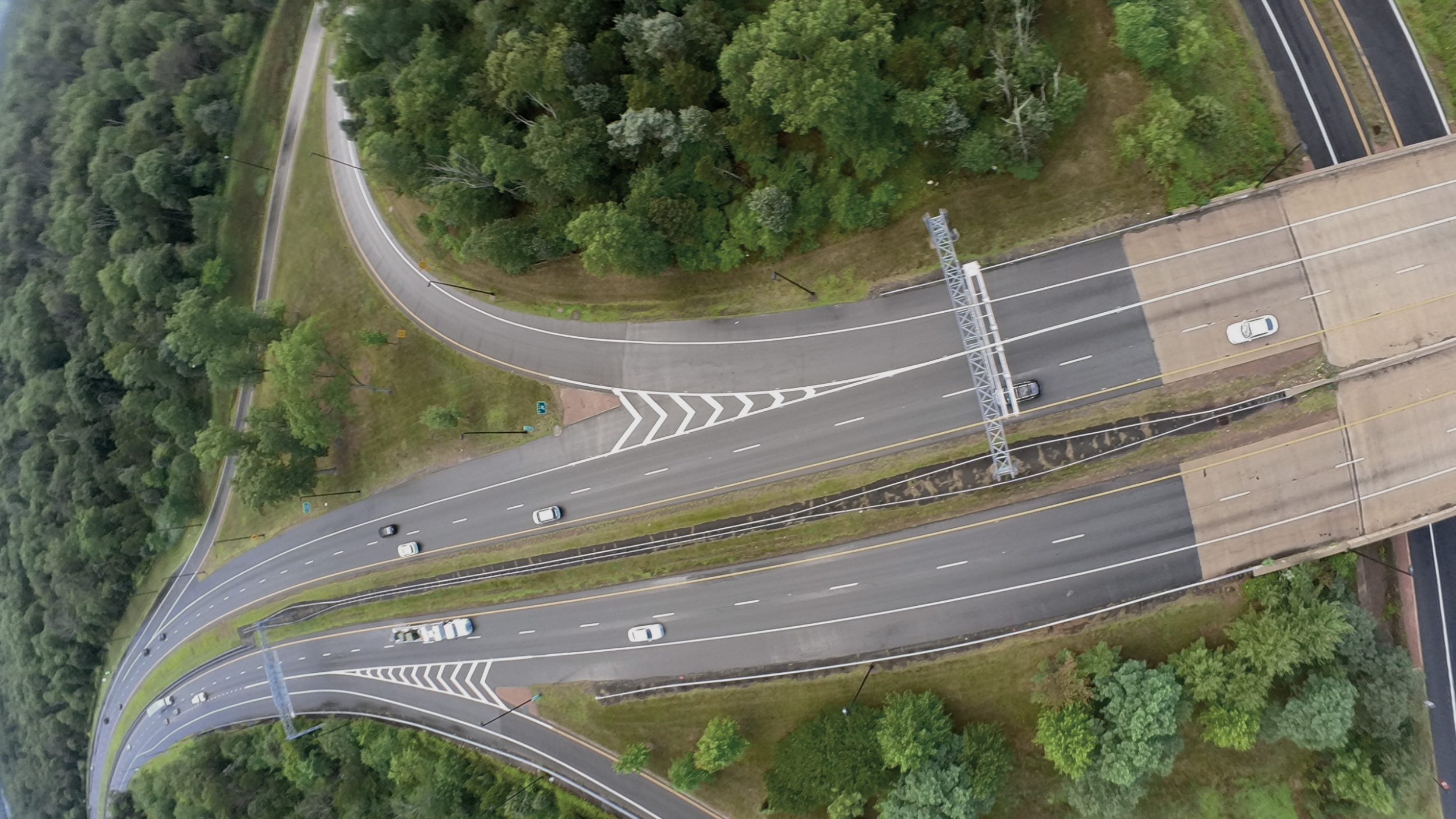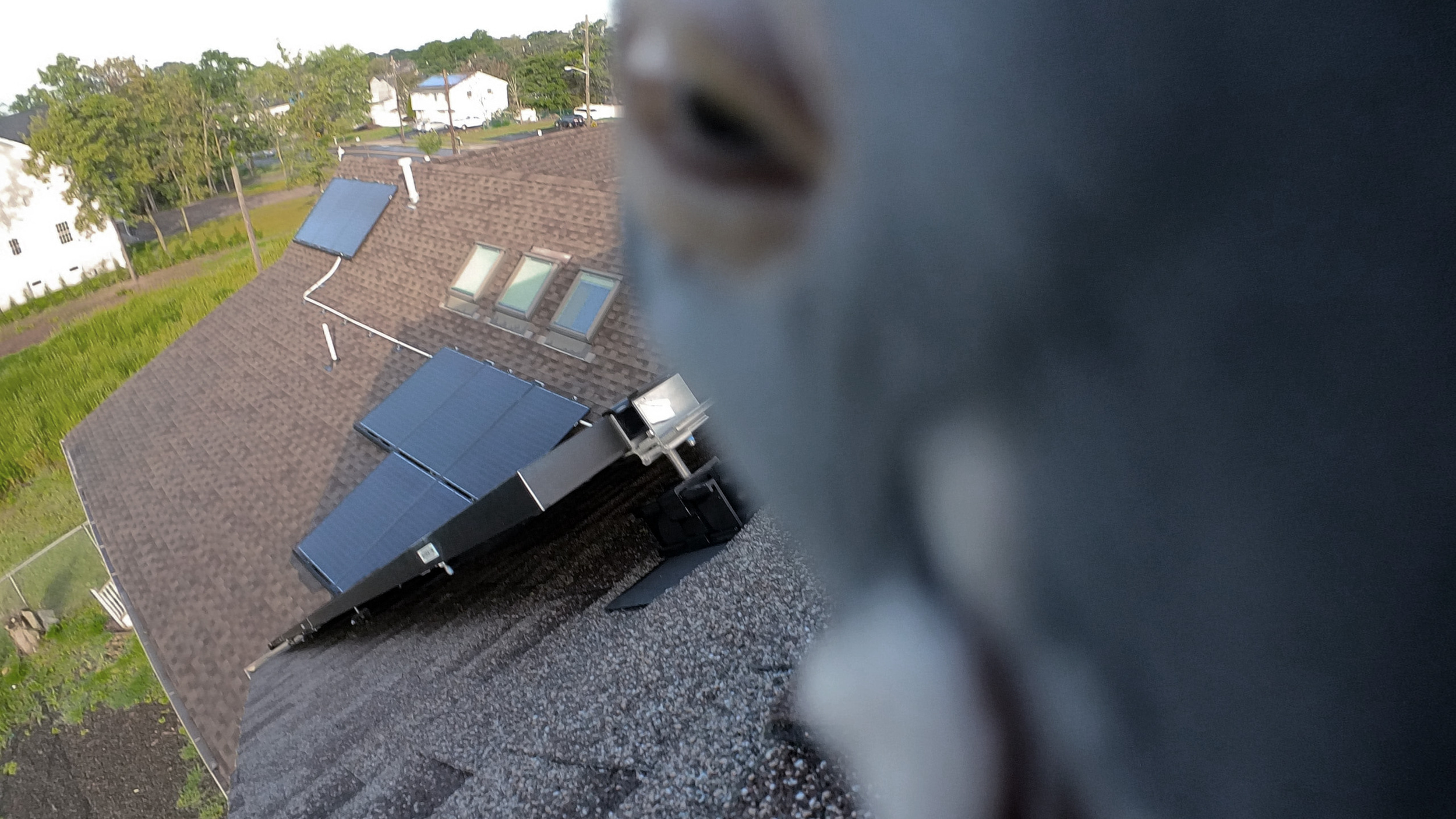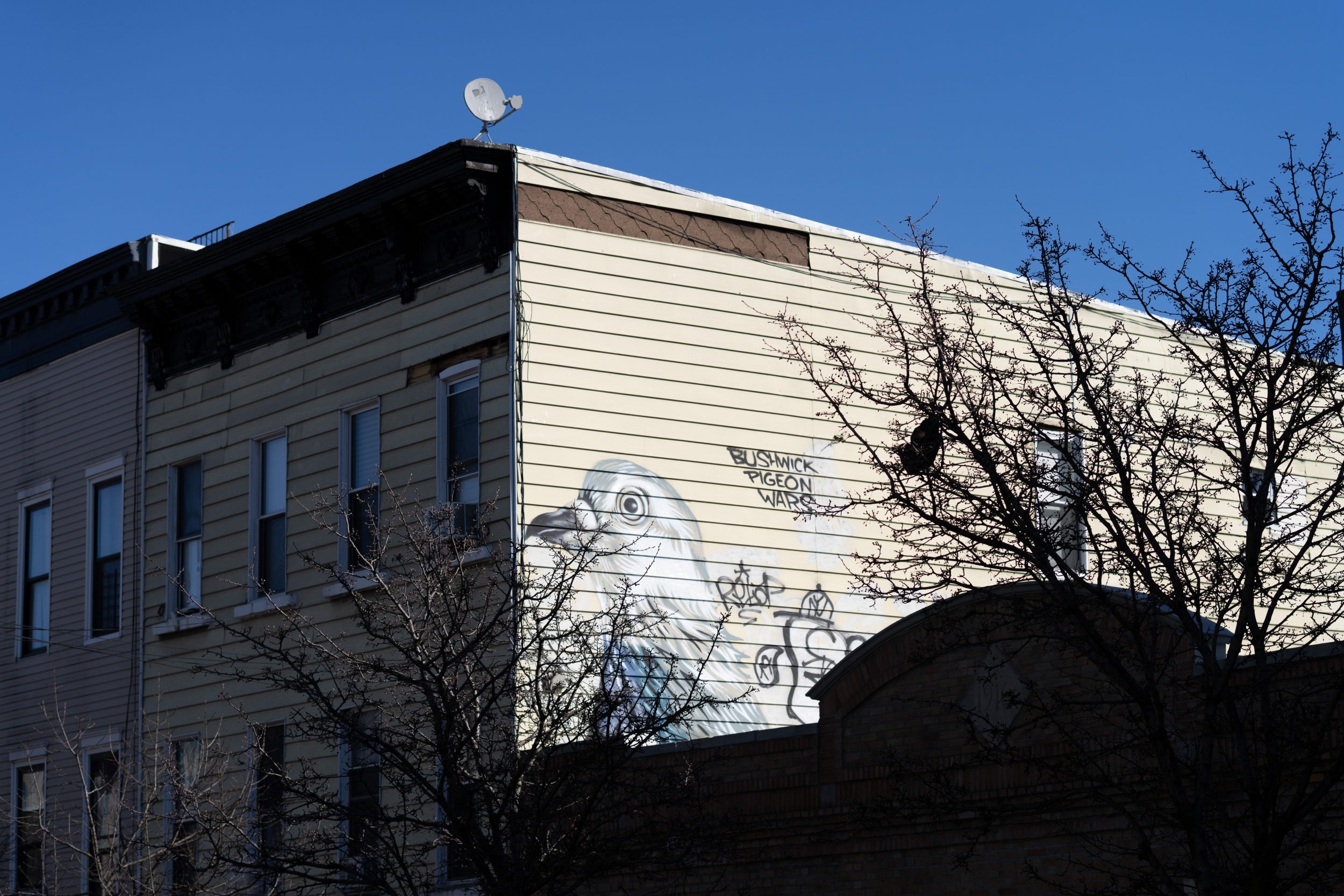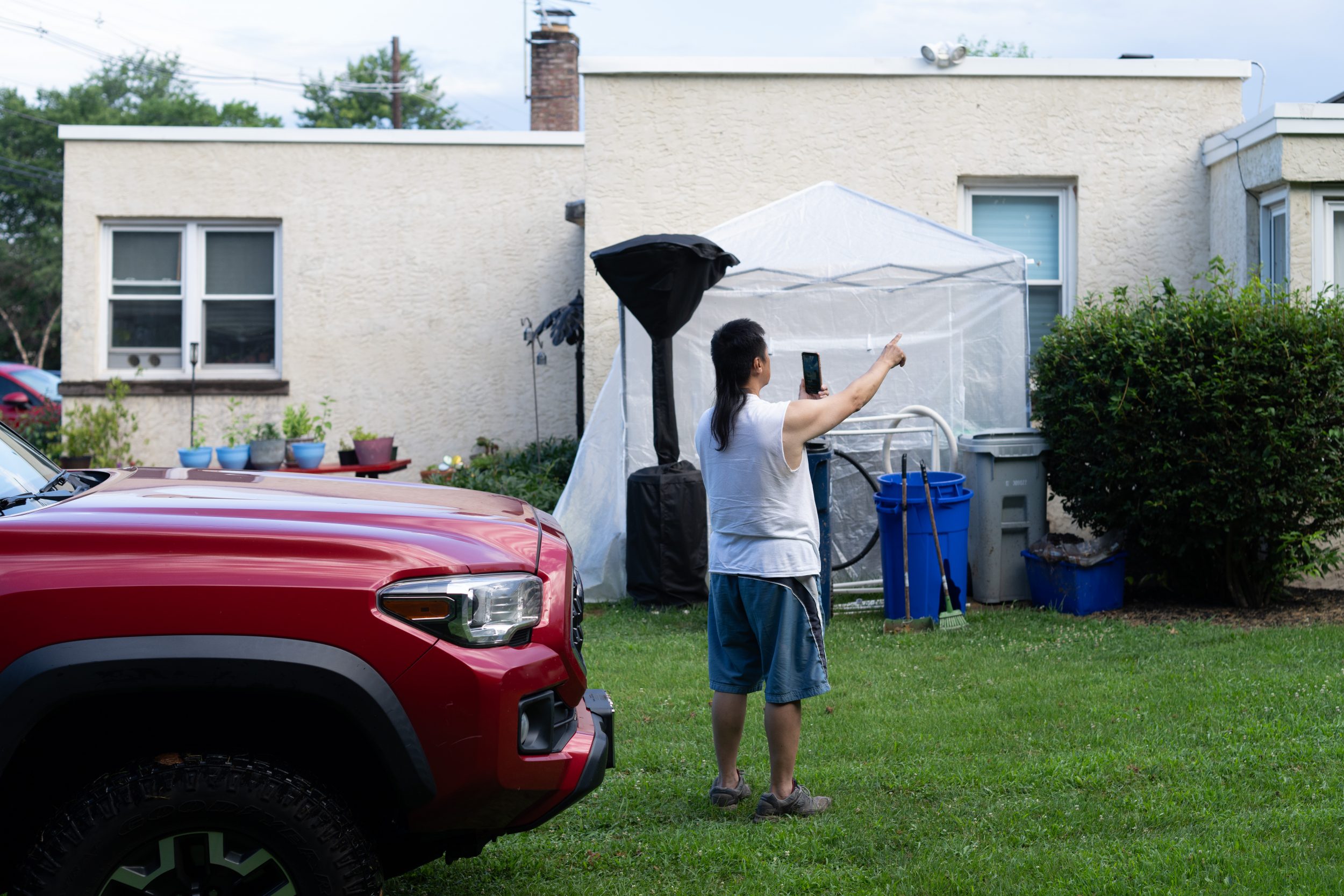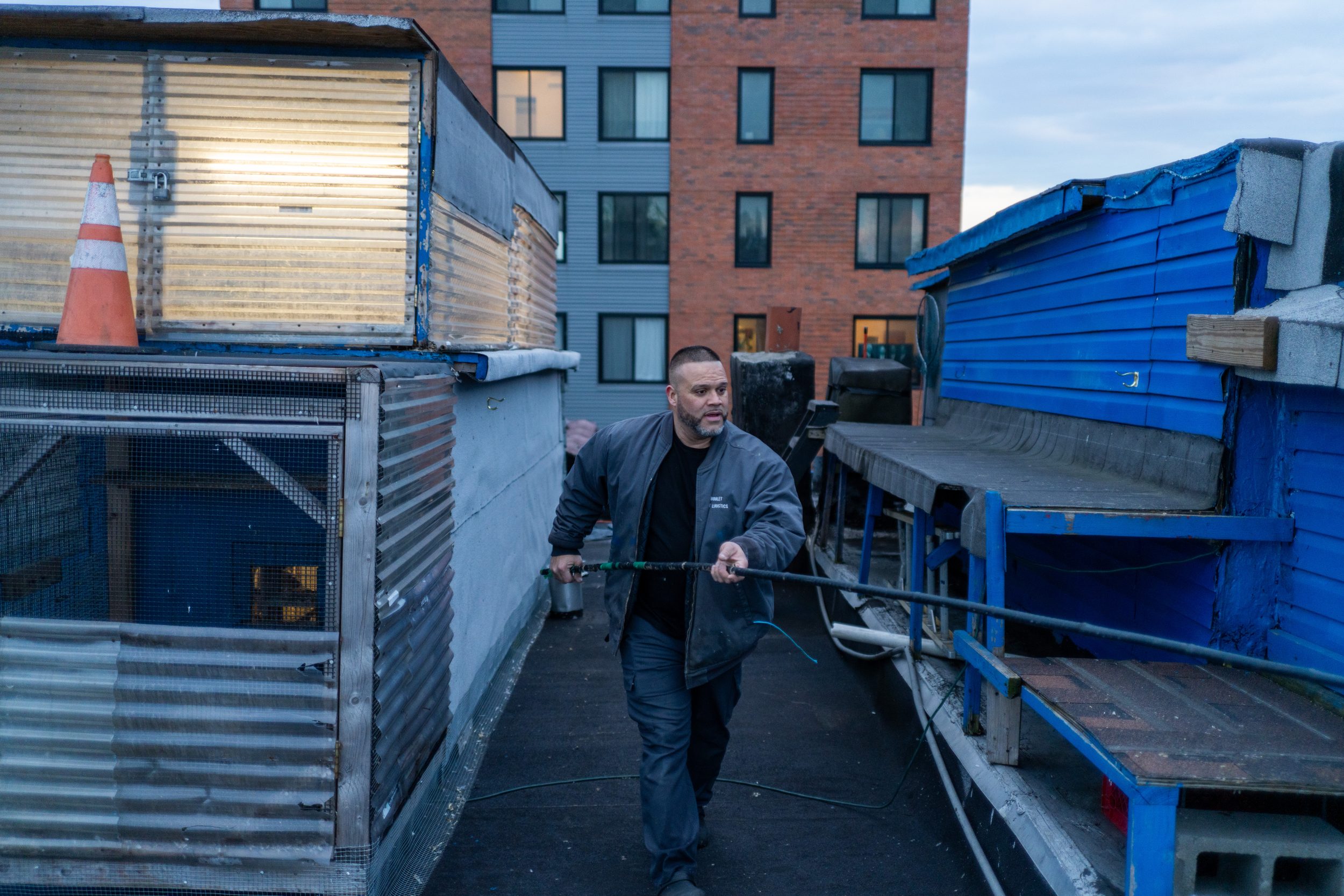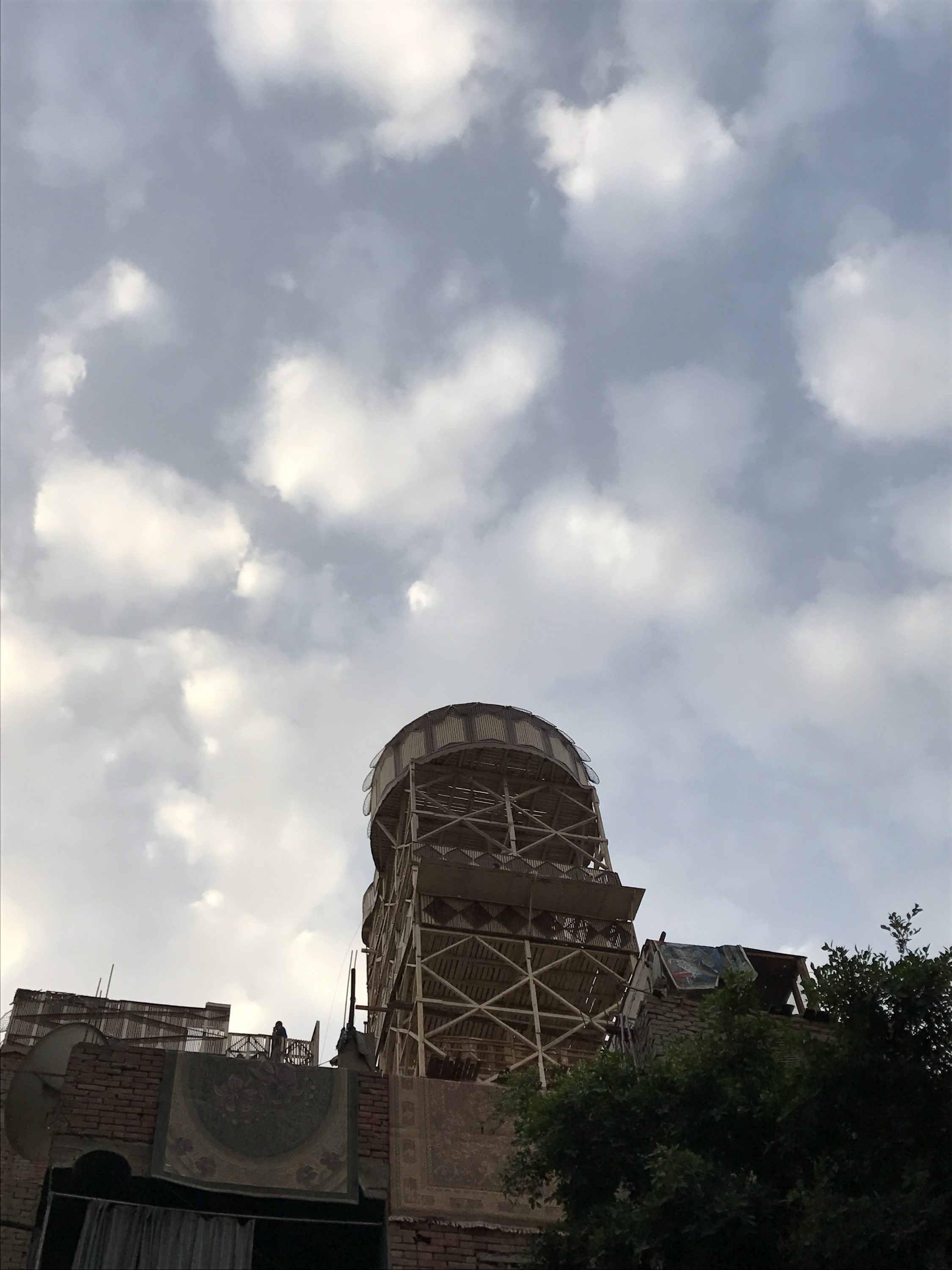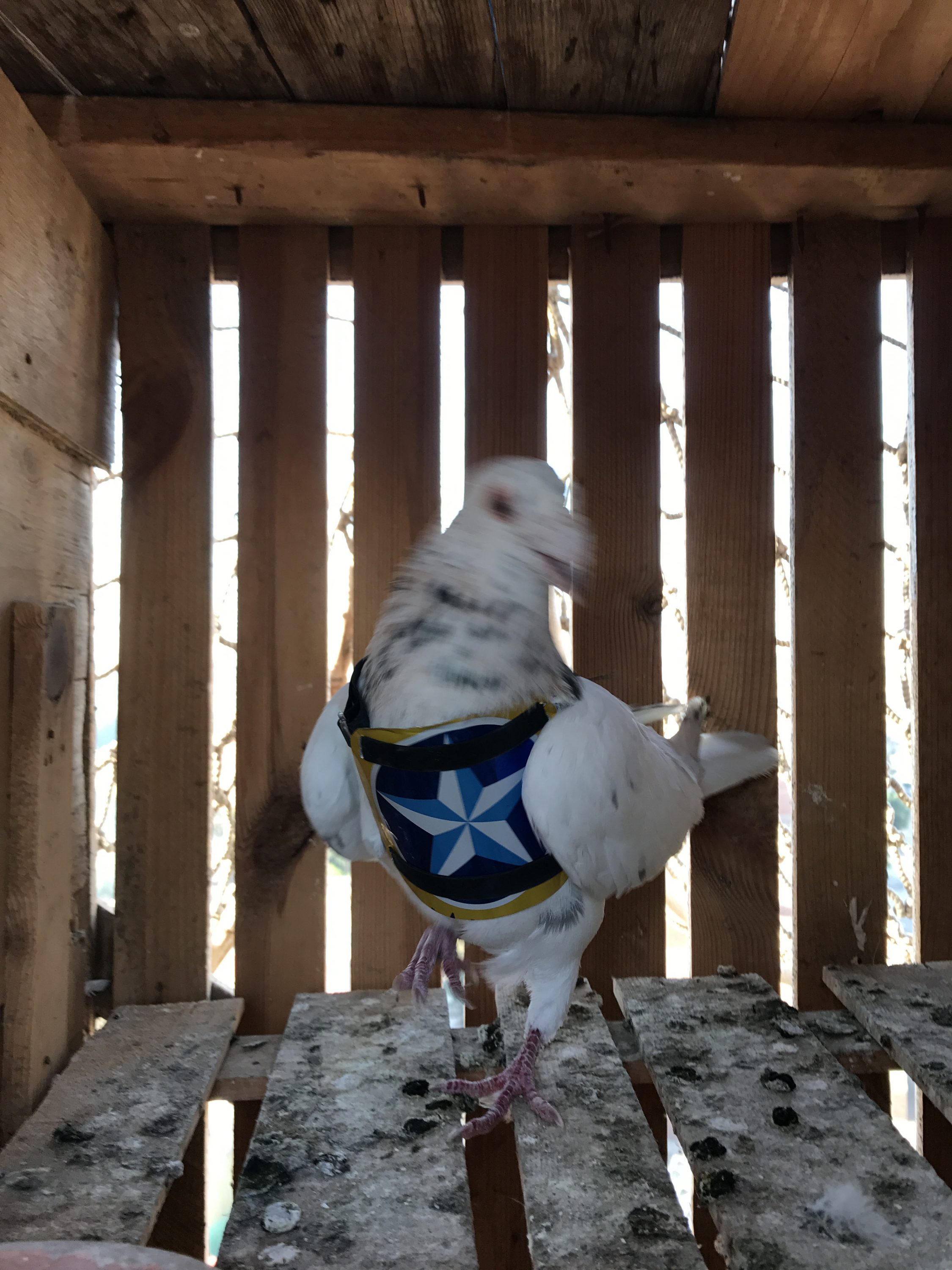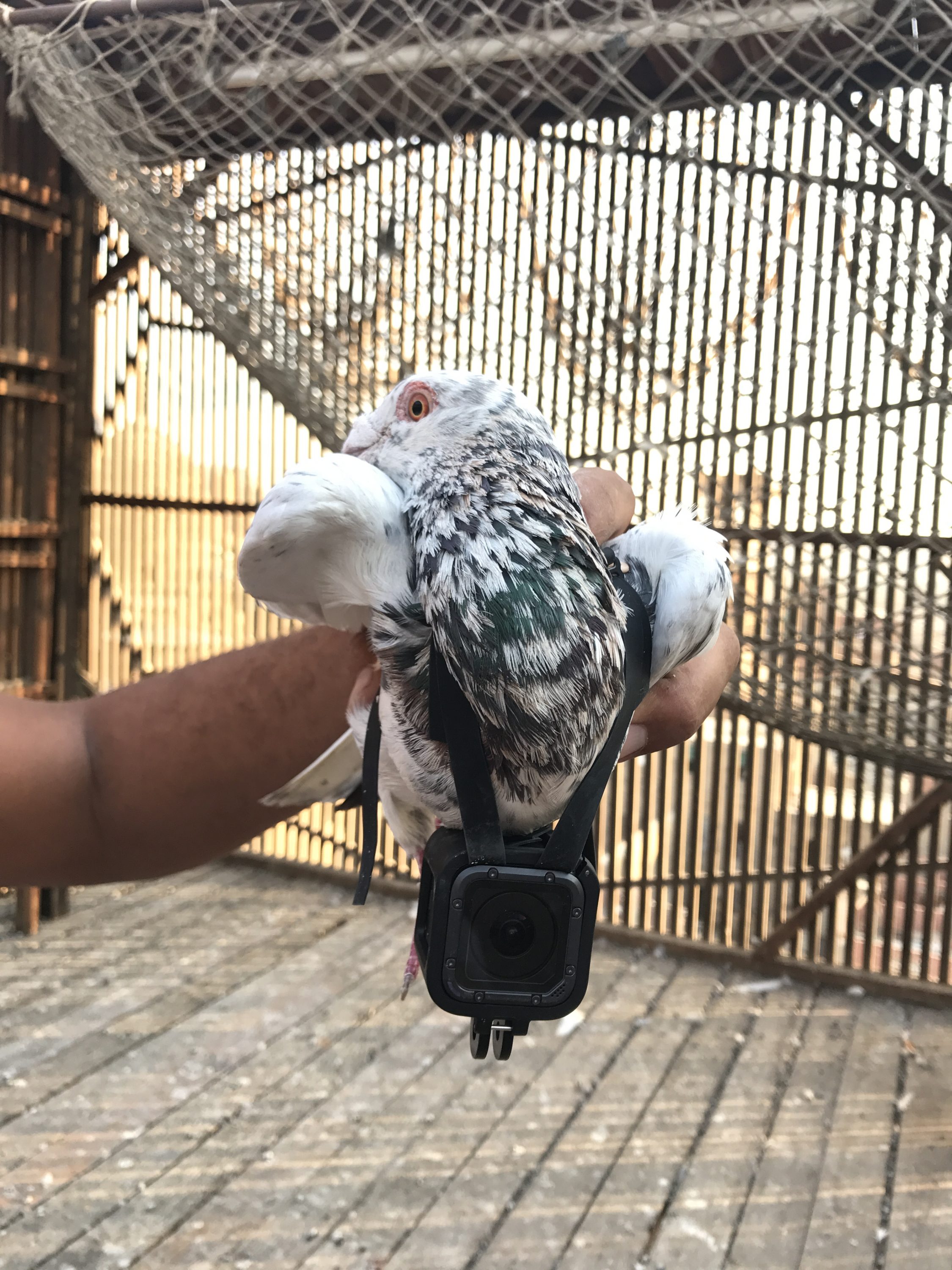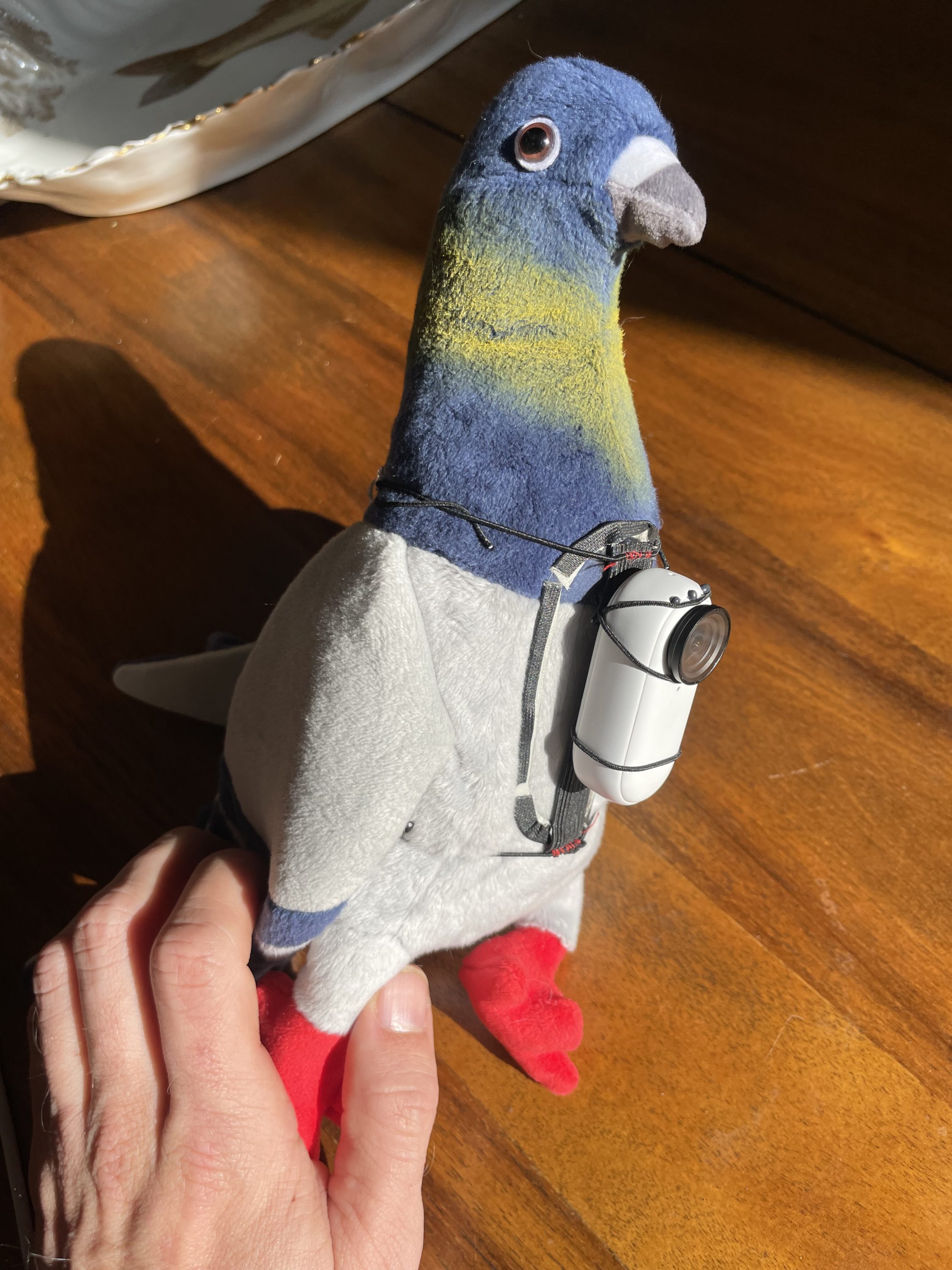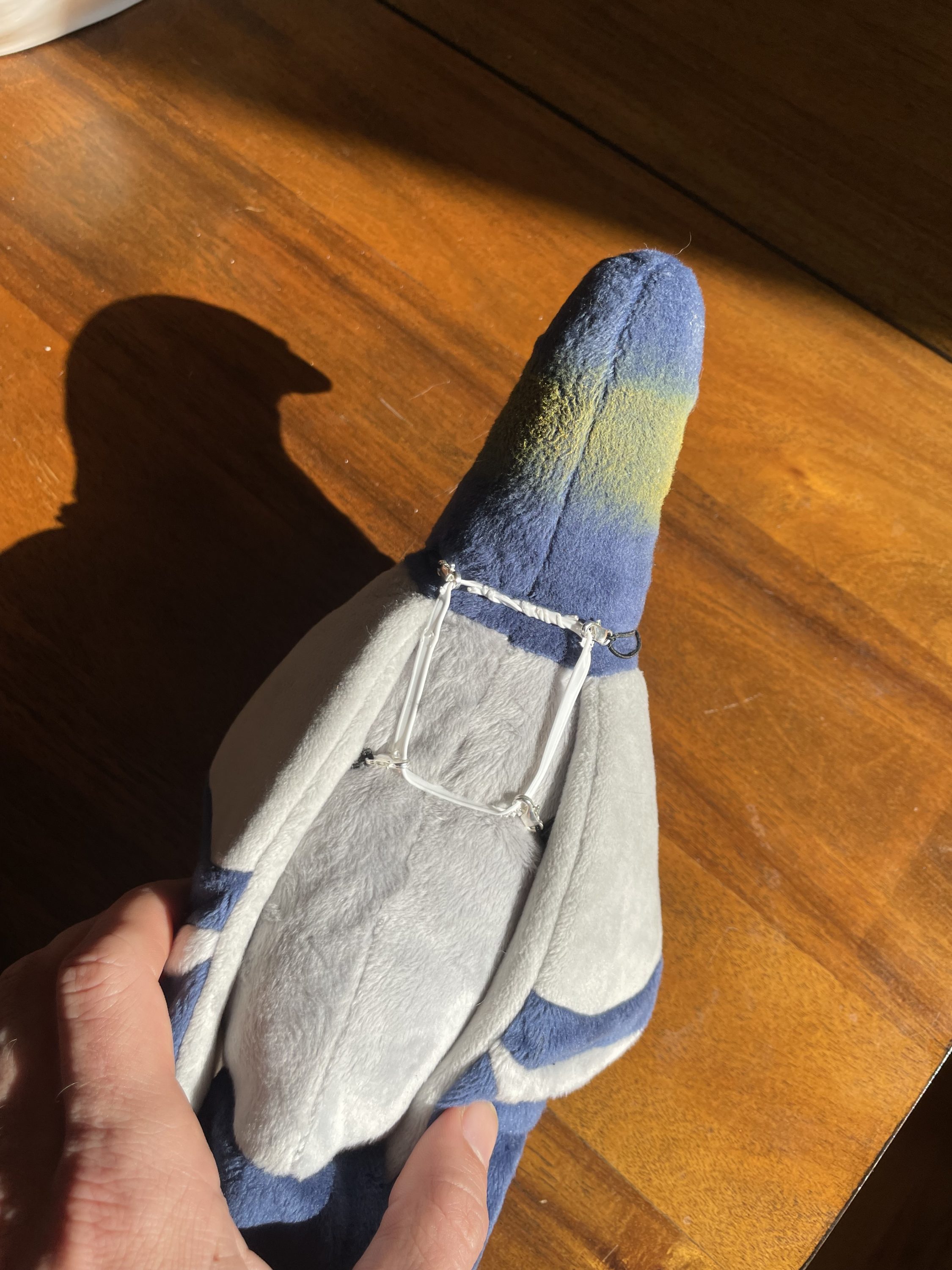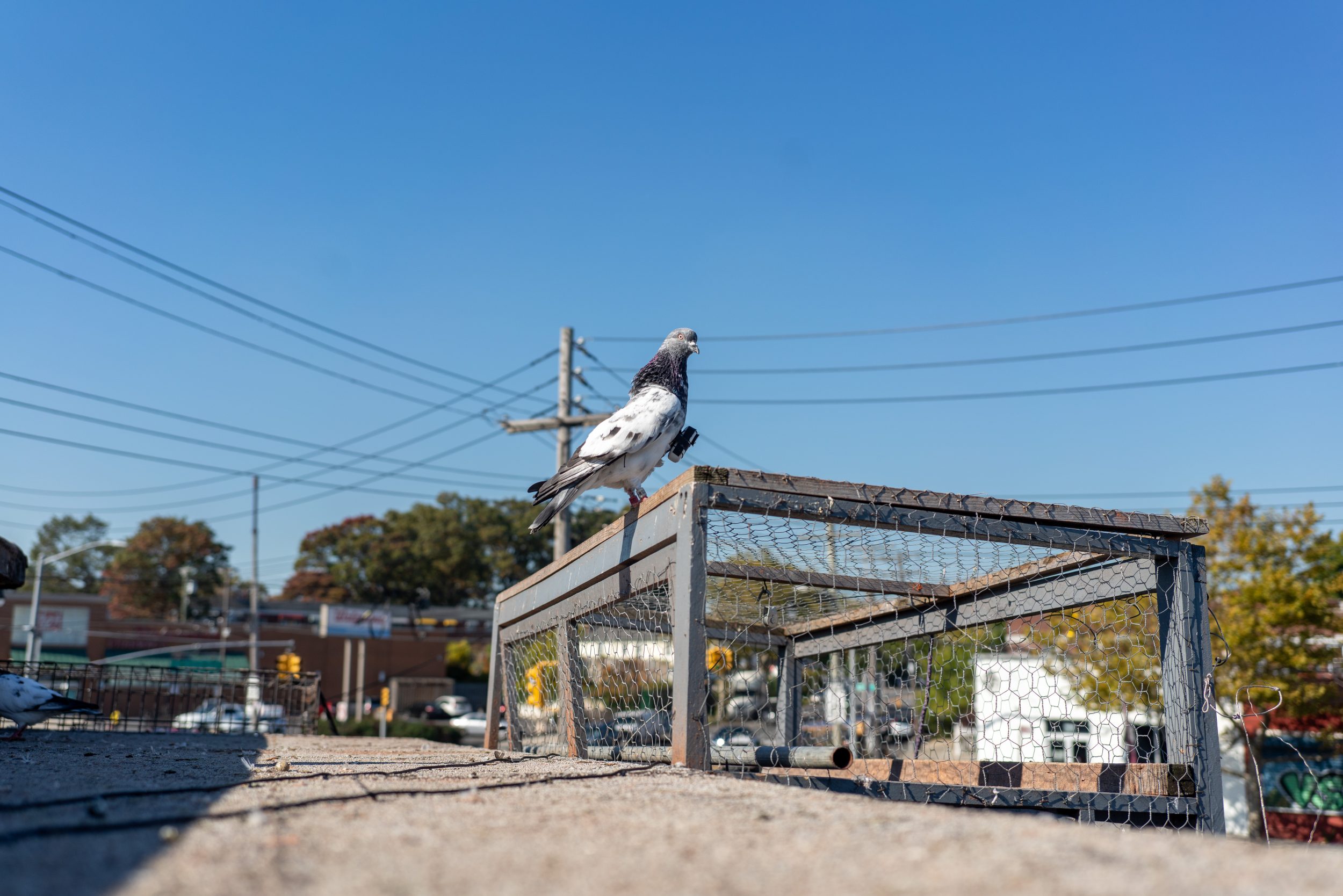
Capturing Avian Perspectives: Pigeon Photography
I’m a Boston based photographer with a fascination for pigeons. This project began as an experiment to see if attaching a camera to a pigeon was even possible – but now it has taken on new purpose and meaning. From capturing unique photographs from a new perspective, to potentially assisting in the understanding of pigeons’ behavior and flight patterns, there are countless possibilities for this project.
First off, I want to express my gratitude towards the pigeon fanciers who have trusted me with their beloved pets. It is through their openness and support that I am able to explore new frontiers within the realm of avian photography. The cultural history of pigeons – from seeing them in flocks over China, to the coops above Cairo’s streets – has always intrigued me and inspired my work.
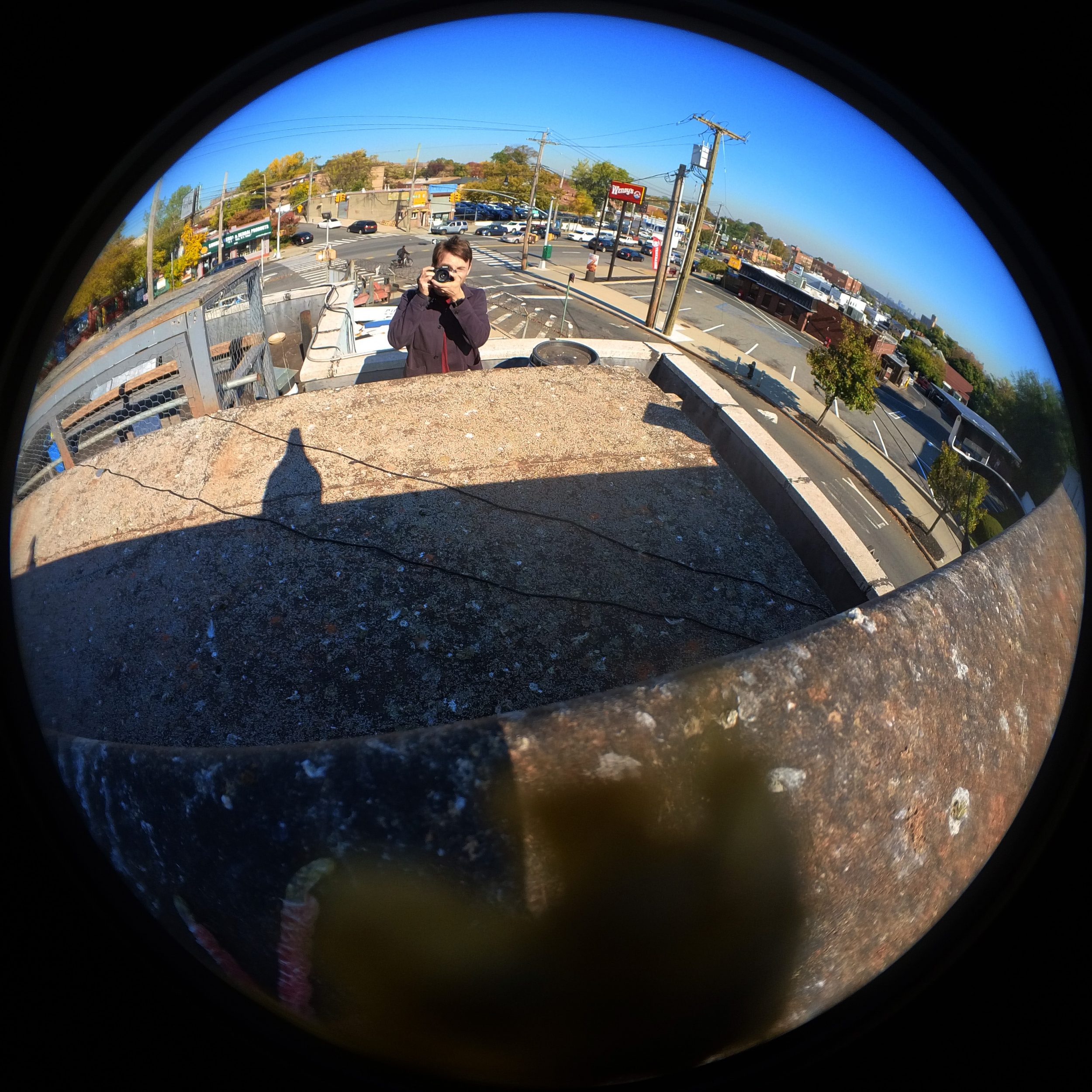
Why attach a camera to pigeons?
As I embarked on this journey, the initial goal was simply to determine if it was feasible to capture images through a pigeon’s perspective. However, as the experiment progressed, I began to envision numerous applications for such technology: from publishing stunning collections of photographs in magazines or books, to working with pigeon breeders worldwide to study their birds and their flights more closely. The possibilities are truly endless!
I travel a lot for my photo assignments, so I would like to meet pigeon fanciers worldwide and work with them to photograph their pigeons and their pigeon’s flights.
Maybe it is to make a pretty set of photos from a new perspective. Maybe it is to develop the technology so pigeon fanciers can study and understand their birds in a new way. Maybe there is an underlying story behind the trends in pigeon racing. There are a lot of possibilities, and I am open to suggestions.
How did I start pigeon photography?
My curiosity about pigeons began almost 20 years ago in China. I saw flocks of tumbling pigeons circling over Kashgar. I spoke enough Uighur to find a coop owner and ask some basic questions. But there was much more to learn. I returned to pigeon coops many times in Egypt. The owners were always welcoming. Their height above the city streets made them a refuge.
One of my favorite projects has been this series of portraits of pigeons.
In Egypt, drones are illegal, hard to import, and a good way to get arrested. But there was a moment of openness when I got to thinking about trying to attach a GoPro to a pigeon. Unfortunately, the technology was too heavy, and the bird couldn’t get off the ground.
But in the last five years, the technology has improved, the cameras have gotten smaller, and the threat of arrest in the U.S. is much lower. So I’m trying again.
How to make a pigeon harness?
I have gone through several designs for making these harnesses and have found a few tricks to make them strong and light.
After a few iterations of designs, I have a pigeon harness that works well. As you can see, nothing is particularly strong because a pigeon in flight doesn’t have a lot of force. I think of how a bird is engineered with feathers and bones so thin that they easily break, and I design it with a similar philosophy.
The clasps and elastic are from a fabric store. The plastic or cardboard chest plate is from the trash. The back is made from a twisty tie. I use a bit of sewing for the loops that connect the camera, but I also use super glue and gaffer tape where necessary.
My original design used a shorter cardboard chest plate, which allowed the camera to flex around too much, so I am trying a longer, stiffer plastic chest plate on this iteration.
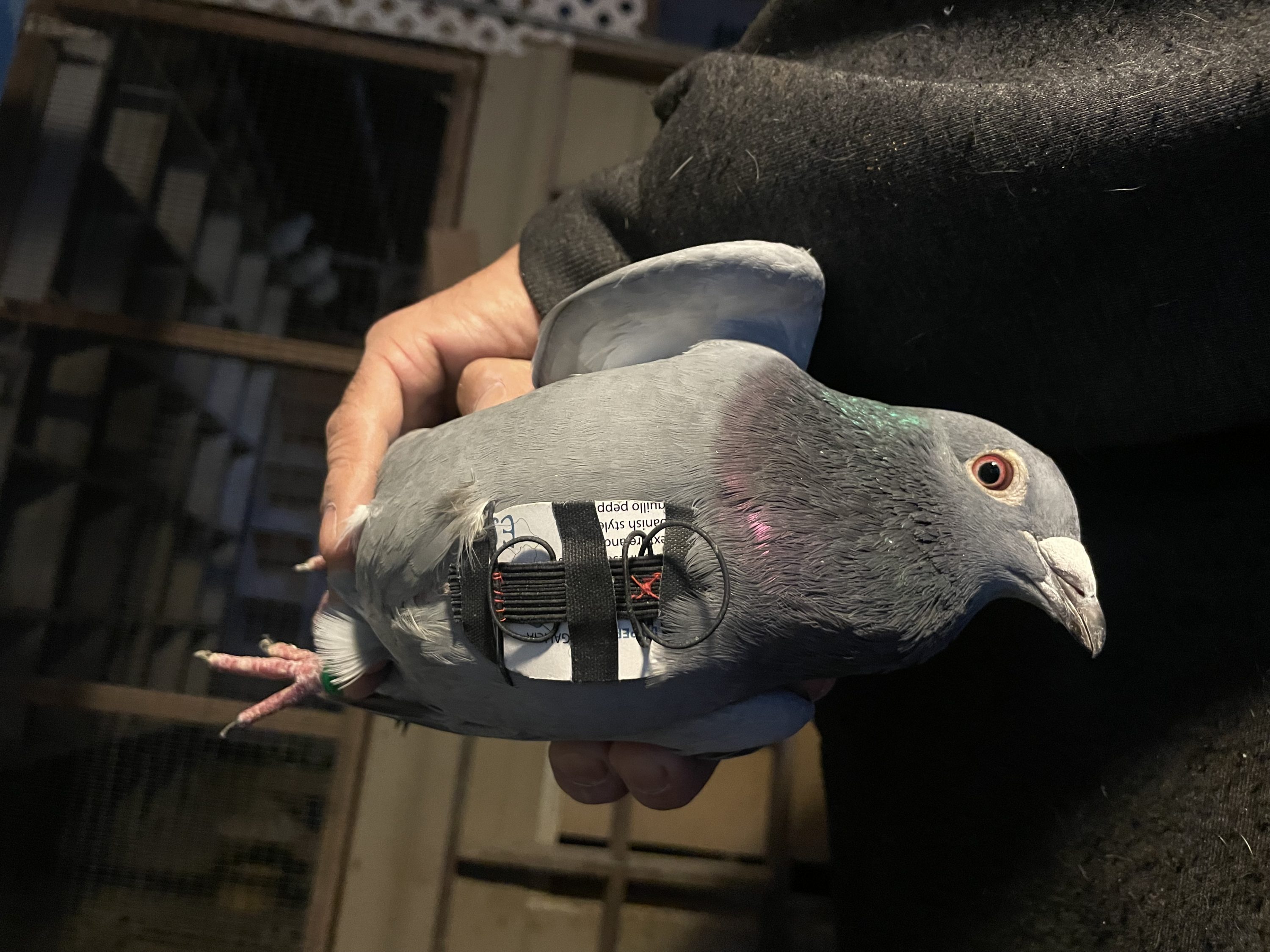
I found one rule of thumb repeated many places across the internet “Pigeons weigh between 300 and 500 grams and can carry up to 10 percent of their body weight, or about 30 to 50 grams”
So I designed the camera+harness to be about 30 grams. The camera is a Insta360 Go 2, which weighs 26 grams. So the harness is about 5-6 grams.
The birds have all been able to fly with this for distances of a few miles.
There is a new Insta360 Go 3, with a better camera, but it weighs about 35 grams, so I haven’t bought and tried it yet.

Who else has attached a camera to pigeons?
In my quest for knowledge about pigeons, I have found myself drawn to the work of pioneers like Dr. Julius Neubronner, who patented the “pigeon camera” back in 1907. By building upon this legacy and pushing technological boundaries, I hope to continue exploring new ways to capture the wonder and beauty of these remarkable creatures.
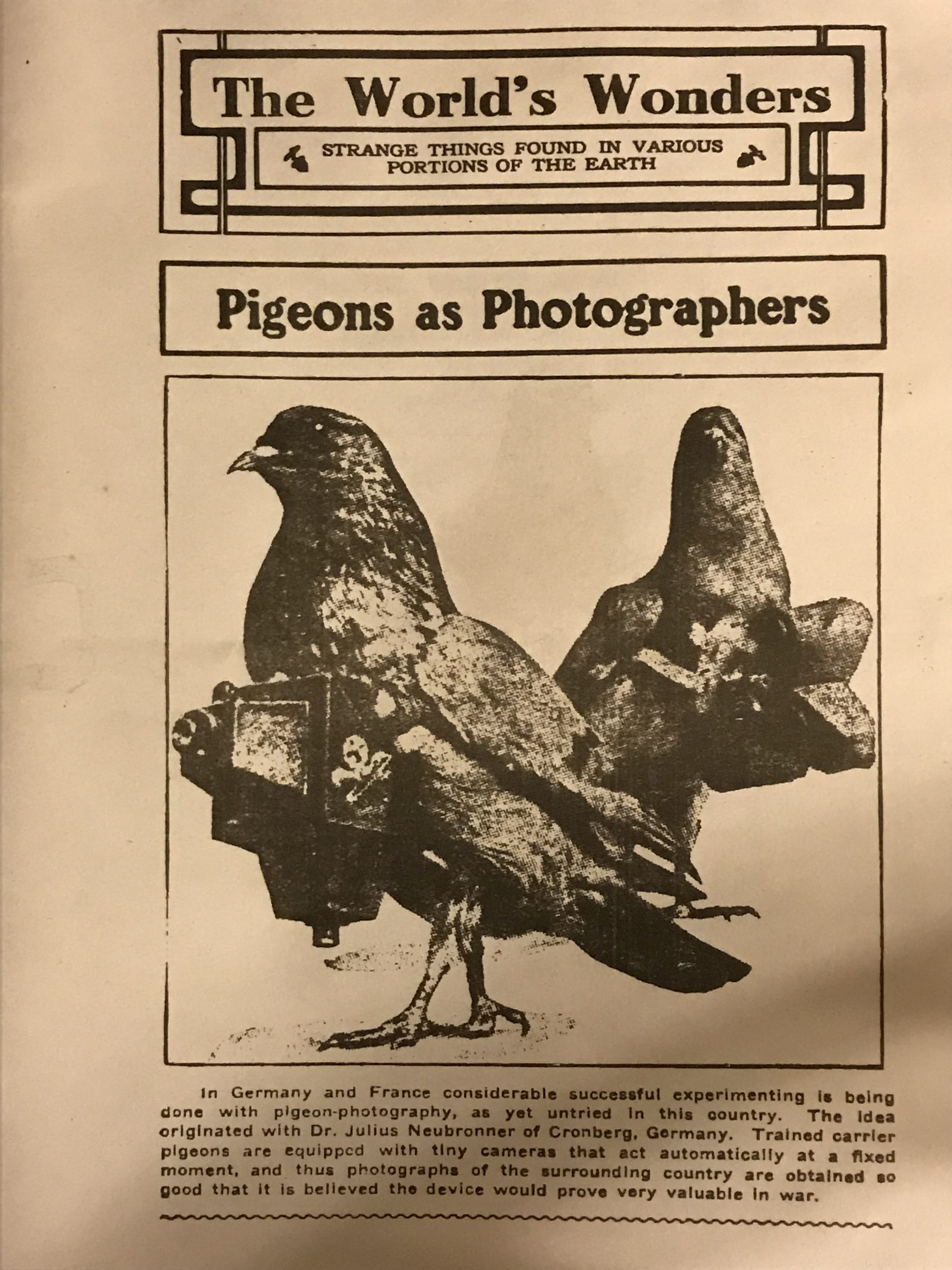
I found The New Pigeon Guy on youtube, who made pigeon videos more than ten years ago. My favorite is a music video called Pigeon, Pigeon, Pigeon!
There is also an art project from 2013, flying pigeons with cameras from Cuba. Trading with the Enemy, by Duke Riley.
I just stumbled on a reddit dedicated to bird photographers: https://www.reddit.com/r/PraiseTheCameraBird/
